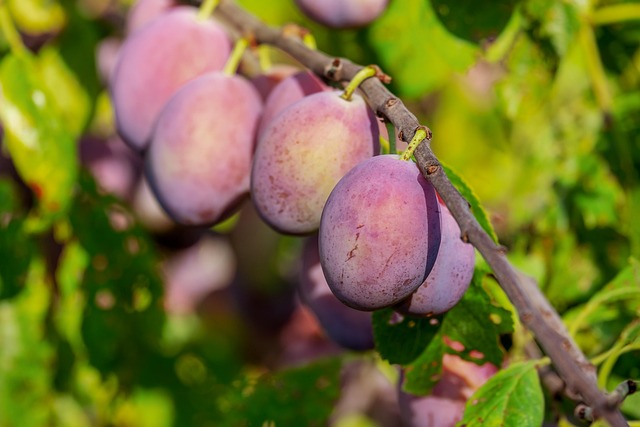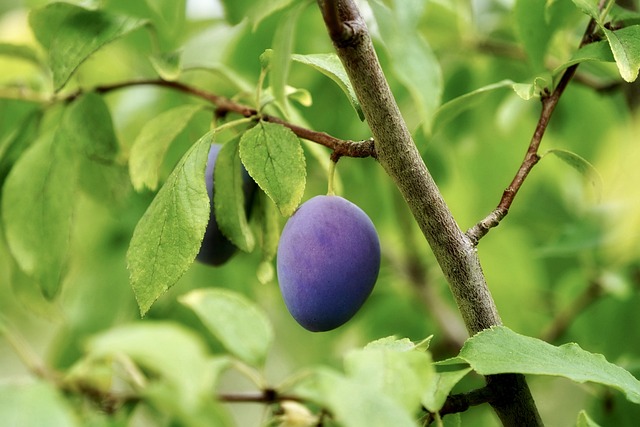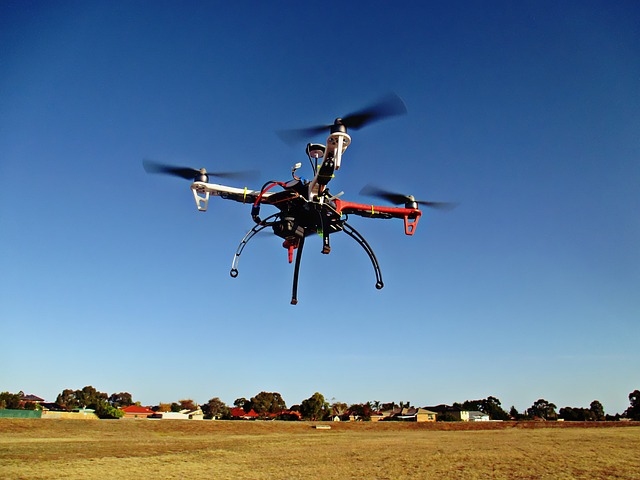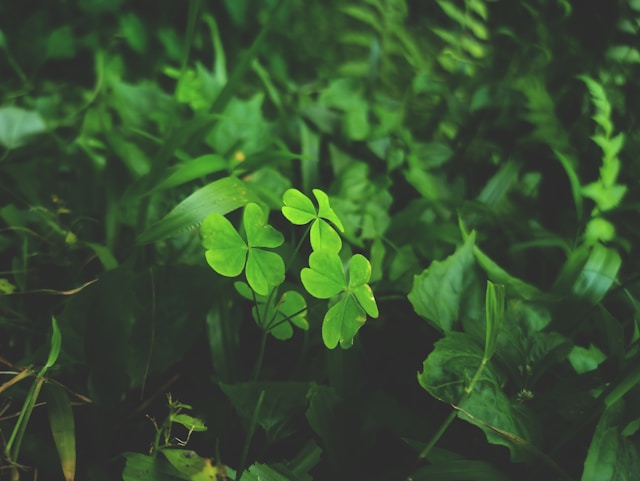Imagine this: You’ve spent years taking care of your Japanese Plum tree—watering it, watching it grow, dreaming of those sweet plums. But spring comes and goes and there’s not a single fruit in sight. Sound familiar? You’re not alone. Japanese Plum trees are a favorite among gardeners for their beautiful blooms and delicious harvests but they can be finicky. When they don’t fruit it’s frustrating—and sometimes downright confusing.
The good news? There’s usually a fixable reason behind it. In this post we’ll go over the top reasons your Japanese Plum tree isn’t producing and give you step by step solutions to get those plums back on your table. Whether you’re a seasoned grower or a backyard beginner let’s get your tree thriving again.
How Japanese Plum Trees Should Fruit
Before we get into the problems let’s set the stage with how things should work. Japanese Plum trees (Prunus salicina) bloom in early spring with beautiful white or pink flowers. By summer those flowers should turn into plums—if all goes well. For that to happen your tree needs a few things: proper pollination, at least 6-8 hours of sunlight daily, well draining soil and the right nutrients.
Most Japanese Plum varieties aren’t self fertile meaning they need a buddy—a compatible pollinator tree—to produce fruit. Without this or if other conditions fail your tree will be beautiful but fruitless. Understanding this baseline helps us figure out where things might be going wrong. Let’s get into the culprits.
Top Japanese Plum Varieties for Gardeners
Choosing the right Japanese Plum variety can make or break your harvest. While most trees are grown from grafted stock rather than seeds (to ensure fruit quality), knowing the best cultivars helps gardeners pick winners. Here are five standout varieties worth planting—and why.
- Santa Rosa
- Why It’s Worth It: Known for its sweet-tart red fruit, this classic blooms early and doubles as a great pollinator for other Japanese Plums.
- Best For: Beginners wanting reliable yields.
- Methley
- Why It’s Worth It: A self-fertile gem with juicy, reddish-purple plums—perfect if you’ve only got space for one tree.
- Best For: Small gardens or solo planters.
- Shiro
- Why It’s Worth It: Bright yellow fruit with a mild, sweet flavor; it’s a heavy producer once established.
- Best For: Sunny climates and fruit lovers.
- Satsuma
- Why It’s Worth It: Deep red flesh and a rich, tangy taste make it a standout for preserves or eating fresh.
- Best For: Cooks and adventurous gardeners.
- Beauty
- Why It’s Worth It: Early-ripening with sweet, amber-red plums; it’s hardy and adapts well to various soils.
- Best For: Early harvests in cooler regions.
Gardener’s Tip:
Check with local nurseries for varieties suited to your USDA zone—Japanese Plums thrive in zones 5-9. Pair non-self-fertile types (like Shiro or Satsuma) with a pollinator for best results. Starting from seed? It’s a long shot—grafted trees are the way to go for consistent fruit.
Japanese Plum vs. American Plum: Which Should You Plant?
| Feature | Japanese Plum (Prunus salicina) | American Plum (Prunus americana) |
| Fruit | Larger, juicier, sweet-tart (e.g., Santa Rosa, Shiro) | Smaller, often tart, great for jams |
| Climate | Warmer zones (5-9), 300-500 chill hours | Colder zones (3-8), 800+ chill hours |
| Pros | Heavy yields, tasty fresh or cooked, beautiful blooms | Self-fertile, frost-resistant, low maintenance |
| Cons | Needs pollinator, less cold-hardy | Less juicy, smaller harvests, astringent raw |
| Best For | Mild climates, fruit lovers | Cold regions, low-effort gardeners |
| Planting Tip | Pair with a pollinator for best results | Ideal for standalone or wildlife gardens |
Quick Decision Guide
- Choose Japanese Plum if: You’re in a temperate area and want big, sweet plums (and can manage pollination).
- Choose American Plum if: You face harsh winters and prefer a hardy, fuss-free tree.
- Pro Tip: Match your USDA zone and taste—Japanese Plums shine for flavor, American Plums for toughness.
What’s Stopping Your Japanese Plum Harvest?
Here are the five most common reasons your Japanese Plum tree isn’t fruiting—and trust us, one of these is likely your issue.
Reason 1: Lack of Pollination
Japanese Plum trees often need a partner for cross-pollination. If you’ve got just one tree and no compatible variety nearby (like Santa Rosa or Methley), those gorgeous spring blossoms won’t turn into fruit. Bees and other pollinators also play a big role—if they’re not visiting, pollination fails.
Reason 2: Poor Pruning Practices
Pruning is a must for Japanese Plum trees, but it’s easy to overdo it. Hacking away too much—or pruning at the wrong time (like late fall)—can remove the buds that would’ve become next year’s fruit. Neglecting pruning altogether isn’t great either; overgrown branches block sunlight and airflow, stunting fruit development.
Reason 3: Insufficient Sunlight
Your Japanese Plum tree craves sunshine—6-8 hours a day, minimum. If it’s tucked in a shady corner or overshadowed by taller trees, it won’t have the energy to produce fruit. Less light means fewer blooms, and fewer blooms mean no plums.
Reason 4: Nutrient Deficiencies
Soil that’s low on key nutrients—like potassium or phosphorus—can leave your Japanese Plum tree struggling. Without the right fuel, it might focus on growing leaves instead of fruit. Over-fertilizing with nitrogen, on the other hand, can lead to lush greenery but no blooms.
Reason 5: Environmental Stress
Mother Nature can throw curveballs. A late frost zapping spring blossoms, a summer drought, or scorching heat can all stop fruit from forming. Even too much rain can stress your Japanese Plum tree, causing flowers or young fruit to drop prematurely.
Recognize any of these in your garden? Don’t worry—each problem has a fix, and we’re about to walk you through them.
Solutions to Get Your Japanese Plum Tree Fruiting Again
Now that you know what’s holding your tree back, let’s tackle each issue with practical solutions. Grab your gardening gloves—here’s how to turn things around.
Fix 1: Ensure Proper Pollination
If pollination’s the problem, plant a second Japanese Plum tree nearby—check for varieties that bloom at the same time as yours (your local nursery can help). No space? Attract bees by planting pollinator-friendly flowers like lavender or marigolds around your tree. You can even hand-pollinate small trees using a paintbrush to transfer pollen between flowers—it’s easier than it sounds!
Fix 2: Prune Smarter
Timing is everything. Prune your Japanese Plum tree in late winter or early spring, before buds swell. Focus on removing dead or crossing branches and thinning the canopy to let sunlight in. Aim to cut no more than 20-25% of the tree at once—overdoing it risks next season’s fruit. A pair of sharp pruning shears and a little patience go a long way.
Fix 3: Optimize Sunlight
Check your tree’s spot. If it’s shaded by a fence or neighboring oak, consider trimming back obstructions or relocating a young tree (if feasible). For mature trees, thin out upper branches to let light penetrate lower levels. Japanese Plum trees thrive in full sun, so give them every ray you can.
Fix 4: Feed Your Tree Right
Test your soil with a simple kit from a garden store—it’ll reveal what’s missing. For fruiting, Japanese Plum trees love a balanced fertilizer like 10-10-10, applied in early spring. Avoid high-nitrogen blends late in the season; they’ll push leaf growth over fruit. Add compost annually to keep soil rich and well-draining—your tree will thank you.
Fix 5: Protect Against Weather
Frost threatening blooms? Cover your Japanese Plum tree with a lightweight frost blanket on chilly spring nights. During droughts, water deeply once a week (about 1-2 inches at the base). In scorching heat, mulch around the trunk with wood chips to retain moisture and keep roots cool. A little TLC during extreme weather can save your harvest.
These fixes aren’t just quick patches—they’re long-term investments in your Japanese Plum tree’s health. Stick with them, and you’ll see results.
Common Japanese Plum Pests and Protection Tips
Even with perfect care, pests can derail your Japanese Plum harvest. Here are five culprits to watch for—and how to stop them.
- Plum Curculio
- What It Does: This small beetle lays eggs in young fruit, causing them to drop early.
- Fix: Use organic insecticides like kaolin clay after petal fall, or shake branches over a tarp to collect and destroy adults.
- Aphids
- What It Does: These tiny sap-suckers weaken branches and stunt fruit growth.
- Fix: Spray with neem oil or introduce ladybugs, natural aphid predators.
- Japanese Beetles
- What It Does: They chew leaves and fruit, leaving your tree ragged.
- Fix: Hand-pick them into soapy water or use traps placed away from the tree.
- Peach Tree Borers
- What It Does: Larvae tunnel into the trunk, disrupting nutrient flow and fruiting.
- Fix: Apply a trunk spray (e.g., permethrin) in early summer and keep the base clear of debris.
- Scale Insects
- What It Does: These waxy pests drain sap, reducing vigor and fruit yield.
- Fix: Prune infested branches and apply horticultural oil in late winter.
Quick Prevention Tip:
Mulch properly, inspect regularly, and avoid overwatering—healthy Japanese Plum trees resist pests better. Act fast at the first sign of trouble to save your crop!
Best Practices for Cultivating Japanese Plum Trees
To grow a healthy and productive Japanese Plum tree, gardeners should follow these best practices:
✅ Location & Sunlight
-
Full Sun: Ensure your tree receives at least 6–8 hours of direct sunlight daily.
-
Spacing: Plant trees 15–20 feet apart to allow airflow and proper growth.
✅ Soil Conditions
-
Well-Draining Soil: Japanese Plums dislike “wet feet.” Use loamy soil with good drainage.
-
pH Level: Aim for slightly acidic to neutral pH (5.5 to 7.0).
✅ Watering
-
Consistent Moisture: Keep soil moist during growing season, especially during fruiting.
-
Avoid Overwatering: Excess water can cause root rot.
✅ Fertilization
-
Apply a balanced fertilizer (like 10-10-10) in early spring before blooming.
-
Consider adding compost or mulch to enrich the soil.
✅ Pollination Tips
-
Most Japanese Plums need a pollination partner. Plant different varieties (e.g., Santa Rosa + Shiro) nearby.
-
Encourage bees and pollinators by planting wildflowers or avoiding pesticides.
How Long Until Your Japanese Plum Tree Fruits?
Patience is key in gardening, and Japanese Plum trees are no exception. If your tree’s young (under 3-4 years old), it might just need time to mature—fruiting often starts around year four. For older trees, expect results in 1-2 seasons after applying these fixes, assuming you’ve nailed the basics (pollination, sunlight, etc.).
Keep up consistent care—watering, fertilizing, pruning—and watch for signs of progress, like more blooms next spring. Before you know it, you’ll be picking ripe Japanese Plums straight from your backyard. It’s worth the wait.
Frequently Asked Questions About Japanese Plums
1. Are Japanese Plum trees self-pollinating?
Some varieties like Methley are self-fertile, but most need a compatible pollinator to bear fruit.
2. How long does it take for a Japanese Plum tree to bear fruit?
Typically 3–6 years, depending on the age of the tree at planting and its growing conditions.
3. Can I grow a Japanese Plum in a container?
Yes, dwarf varieties can be grown in large containers, but they require frequent watering and pruning.
4. What are common pests that attack Japanese Plum trees?
Aphids, plum curculios, and Japanese beetles are common. Neem oil and insecticidal soap can help.
5. When should I prune my Japanese Plum tree?
Late winter or early spring before buds break. Avoid pruning in fall to prevent bud loss.
Conclusion
A Japanese Plum tree that won’t fruit can feel like a mystery, but it doesn’t have to stay that way. Whether it’s a pollination snag, a pruning misstep, or a sunlight shortage, you’ve now got the tools to diagnose and fix the problem. Start with one solution—or tackle them all—and watch your tree transform from a leafy disappointment to a fruit-bearing star.
Ready to get started? Try these tips this season, and let us know how it goes in the comments. Want more Japanese Plum know-how? Check out our guide to pruning or pest control for your next step. With a little effort, your Japanese Plum tree will be loaded with fruit before you know it. Happy gardening!





